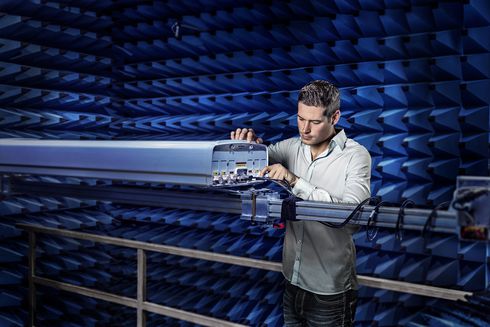LTE antennas are emerging as a key differentiator for mobile operators as they look for ways to get the most out of their 4G networks. Antennas for LTE networks are like the tires on an expensive automobile in that they can make the ultimate performance better or worse.
“Antennas are where the rubber meets the road in any wireless system,” said Jim Nevelle, CEO of the world’s leading LTE antenna vendor, Kathrein. “Carriers need to utilize myriad approaches to make the most of their expensive spectrum.”
Less can be more when it comes to LTE antennas, because operators can reduce interference by targeting narrowly defined coverage sectors. An omnidirectional antenna radiates in all directions, or 360 degrees, but a narrow-beam antenna will cover a much smaller sector. The smaller the coverage sector, the less chance there is that the signal will radiate into neighboring sites and cause interference.
“A lot of the builds that we’re seeing today compared to several years ago have more dense sectorization requirements,” said Ray Hild, VP for infrastructure in North America at Galtronics. “In these dense builds, creating the maximum amount of sectors will help the carrier achieve more capacity and obviously help the end user with better throughput on their individual mobile devices.”
Vendors work hard to create sectors that do not overlap. For mobile device users, this translates into seamless handoffs, meaning that the user moves from one sector to another without any disruption in service. This can be harder to accomplish with LTE networks than it was with 3G networks.
“LTE is very sensitive to interference because of higher orders of modulation,” explained CommScope’s Ray Butler, VP of wireless network engineering. “The way we send bits over the air is more complicated now and more advanced and it’s more sensitive to both interference and noise.” CommScope sees operators turning to narrow-beam antennas for sectorization. The vendor offers one antenna with a beamwidth of just 24 degrees.
Sectorization also helps operators deliver coverage and capacity to high traffic areas. If a hot spot is served by an existing tower, a new cell site may not be needed to solve the problem. Instead, a narrow beam antenna may be able to help the problem area.
“Mobile operators are moving as close as possible to the segment of the population that they are trying to cover; this helps with efficiencies and enhances the customer experience,” said Enzo Dalmazzo, CEO of 3Z Telecom. “The days of boomer sites are gone.”
Image source: Kathrein

